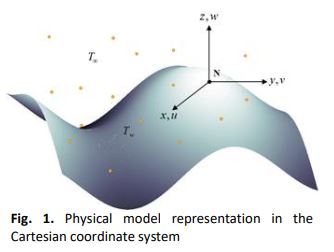Stagnation Point Flow of a Hybrid Nanofluid Under the Gravity Modulation Effect
DOI:
https://doi.org/10.37934/arfmts.92.2.157170Keywords:
hybrid nanofluid, stagnation point flow, g-jitterAbstract
The effectiveness of the heat transfer fluid in the cooling or heating process determines the optimal performance of the nuclear reactor, microelectronic devices, and chip production. Since thermal conductivity improved in hybrid nanofluids, the current study sought to investigate the unsteady free convection hybrid nanofluid flow near a stagnation point as influenced by g-jitter. A hybrid nanofluid consisted of copper (Cu) and alumina (Al2O3) nanoparticles, which were added into water to form Cu-Al2O3/water was considered. Next, relevant variables transformed the governing equation into dimensionless equations before being solved numerically using a centered implicit finite difference method. The fluid field and heat transfer were discussed concerning the stagnation point curvature ratio. The results showed that the g-jitter effect caused fluctuation in all profiles and physical quantities. The frequency and amplitude of the g-jitter reduced the velocity profile while improving the temperature distribution. The heat transfer rate increased by 10.77% when the hybrid nanoparticles volume fractions rose from 0.1 to 0.2. However, the presence of hybrid nanoparticles had reduced the thickness of the momentum boundary layer due to an increase in the local skin friction.
Downloads
































